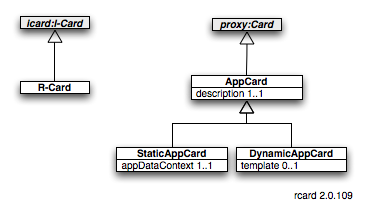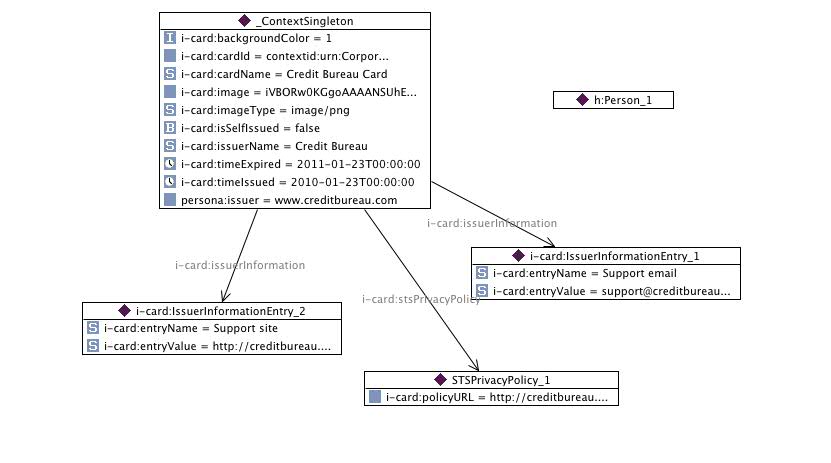Notice: this Wiki will be going read only early in 2024 and edits will no longer be possible. Please see: https://gitlab.eclipse.org/eclipsefdn/helpdesk/-/wikis/Wiki-shutdown-plan for the plan.
R-Card vocabulary
Vocabulary to describe R-Cards (including App-Cards).
Contents
Files
UML Overview
Classes
R-Card
A Higgins relationship card (R-Card), which is essentially a profile of an IMI managed or personal i-card.
- subClassOf i-card:I-Card
AppCard
An App-Card is a card that supports a Javascript app.
- subClassOf proxy:Card
- 1..1 description
DynamicAppCard
A kind of AppCard where its AppData context is dynamically created from the "recipe" of its "template" attribute:
- subClassOf: AppCard
- 0..1 template (URL) - a link to an external "template" context (See TemplateContext class in Template vocabulary)
StaticAppCard
A kind of AppCard where its AppData context is specified by the value of its appDataContext attribute:
- subClassOf: AppCard
- 0..1 appDataContext ContextID
Attributes
appDataContext
Context id of a pre-existing context
- domain: StaticAppData
- value: h:Context - likely an AppData context instance
description
A string description of this AppCard
- domain: AppCard
- value: string
template
URL of an RDF file in n3 notation containing a serialization of a TemplateContext. This template context describes the kind of AppData context that should be dynamically instantiated for this AppCard (see the section on the "template.owl" vocabulary)
- domain: DynamicAppData
- value: xsd:anyURI
AppCard
A proxy:Card that supports a Javascript app. It's proxy:resource is a reference to a target entity in a context that (among perhaps other things) is based on the AppData vocabulary (see app-data.owl)
Example
Notes
- Missing from the above diagram is the resource-udr attribute on the h:Person entity
- Missing from the above diagram is the list of supported claims. This list would include the ICF's resource-udr claim type.



